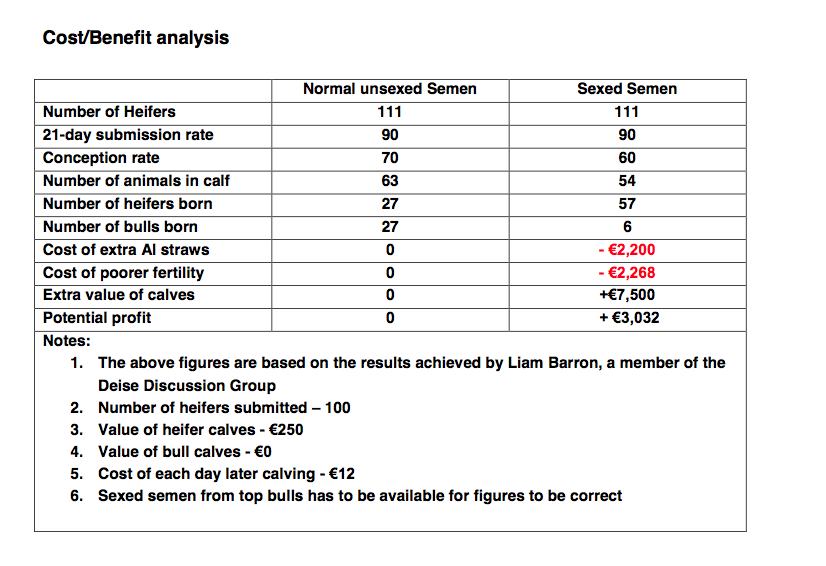Over the past few months there has been much expert analysis of the potential of sexed semen in the Irish dairy industry. But what are the real implications for individual dairy farmers on the ground?
At the recent Positive Farmers conference in Clonmel, Pat Ryan a farmer in Dungarvan, Co Waterford, outlined a farmer’s view of what sexed semen will mean at farm level.
According to Ryan, in his presentation, he noted: “Sexed semen has potentially a lot offer both the dairy and beef industries in Ireland.”
Speaking from a farmer’s point of view, he said: “A key benefit will mean a higher average EBI of the national herd leading to more efficient grass converting dairy cows. An added driver in helping reach Harvest 2020 dairy targets of 50 per cent increase in milk production.”
He added: “More high-quality replacement dairy stock can speed up the removal of diseases such as Johne’s disease from the national dairy herd by allowing for greater culling of infected animals. Better quality beef stock available from the national dairy herd.”
Ryan outlined how he would use sexed semen at farm level.
“I would put some or all the cows and heifers in calf to female sexed semen for the first three weeks of the season, then use conventional semen for three weeks followed by easy calving beef bulls to mop up.
“Then either sell my surplus heifer calves or keep them for expansion within our farm partnership. Either way they will be a valuable commodity to have on farm.”
He noted farmers could: “Enter into an agreement to contract-breed all of the replacements or maybe even a new herd for a new entrant milk producer or someone who wishes to convert their entire herd to a Holstein-Friesian X Jersey herd or someone who only wishes to milk cows on their own farm.”
He said: “I would use sexed female semen on the higher EBI cows in my own herd for replacements and use sexed male easy calving beef bull semen on the rest of the herd. Also I would use sexed male high EBI semen on potential ‘Bull Mother’ cows.”
Ryan stressed: “I am sure that there are other potential uses for sexed semen on my farm that I have not listed here, but my point is that sexed semen has lots of potential uses at farm level.”
He also highlighted that there are extra costs associated with sexed semen. He cited higher costs of AI straws per cow, lower conception rates with sexed semen and the possibility that the ‘Top Bulls’ won’t be available.
This being the case Ryan, along with member of his discussion group, ran a cost-benefit analysis of sexed semen at farm level. The results, courtesy of his presentation, can be seen below, which give a great insight into what sexed semen actually means in terms of money in farmers pockets.
Ryan concluded: “I believe that due to the potential expansion in the Irish dairy herd over the next 10 years sexed semen has great potential for our business.
“It has the potential to increase the rate of EBI gain in our herd. It has the potential to open the door for win-win relationships for us involving the contract breeding of new/changing herds.”
However he cautioned: “It will only be really successful for us if the top bulls are commercially available in sexed semen and we achieve conception rates greater than 60 per cent with sexed semen.”

